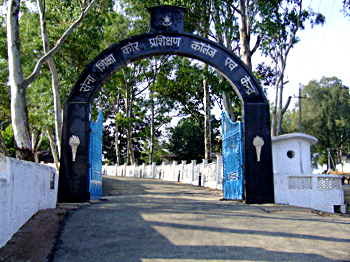 Army Education Corps is one of the most significant arms of Indian Army. The Educational training of the Indian troops started with the establishment of the East India Company. As a matter of fact, there was neither a regular army nor a uniform system for training of troops in India till the beginning of the eighteenth century. The Educational system was evolved for the Company`s army in India primarily as a welfare measure. The nature of the Company army, the socio-political and military development both in India and England were the prime factors responsible for the establishment of an Educational system for the army.
Army Education Corps is one of the most significant arms of Indian Army. The Educational training of the Indian troops started with the establishment of the East India Company. As a matter of fact, there was neither a regular army nor a uniform system for training of troops in India till the beginning of the eighteenth century. The Educational system was evolved for the Company`s army in India primarily as a welfare measure. The nature of the Company army, the socio-political and military development both in India and England were the prime factors responsible for the establishment of an Educational system for the army.
History of Army Education Corps
The beginning of an educational system for the army in India can be traced back to the establishment of the British Regimental Schools in India for providing training to the British troops. The mass scale of literacy amongst the Indian soldiers, the lack of the education system and the need to prepare the Indian soldiers for the post-war period inspired the Commander-in-Chief India, Claude Auchinleck in the year 1944 to propose the formation of a self-contained organisation to look after the educational training of the Indian troops. He recommended the formation of the Indian Army Educational Corps without delay. With approval of Secretary of State for India, on 30th of April 1946, the Governor General in council sanctioned the formation of a new corps designated as the Indian Army Educational Corps with effect from 1st of June 1947. Indian Army Educational Corps was re-designated as the Army Educational Corps on 1st of November 1950.
Several factors compelled the British East India Company to make provisions for educational facilities for the Indian troops. The factors include keeping pace with the general development in the field of education in the army. The educational facilities had been provided to the British troops and the Company`s European troops and the education for the Indian troops who formed the bulk of the Company`s army could no longer be ignored. To keep pace with the general development in the field of civil education in India was another major factor behind the establishment of education system in Indian Army. It was believed that educating Indian sepoys could raise and maintain their morale.
Hence, the need to provide educational facilities to the Indian troops was recognised by the East India Company. A few schools were opened in 1856 in some of the Indian battalions to provide instruction to Indian troops on voluntary basis. The regimental schools for the British and the Indian troops were established in their respective regiments during 1858-1920. During the said period the educational facilities provided to the British and the Indian troops were motivated by a deep sense of welfare and a sincere desire to raise and maintain the morale of the troops and thus the Adjutant General exercised command and control over Regimental schools. Army Education Corps came into existence mainly for their benefit and also because of the persistent demand of the soldiers.




















